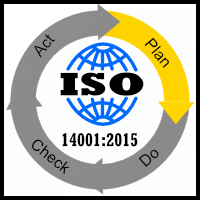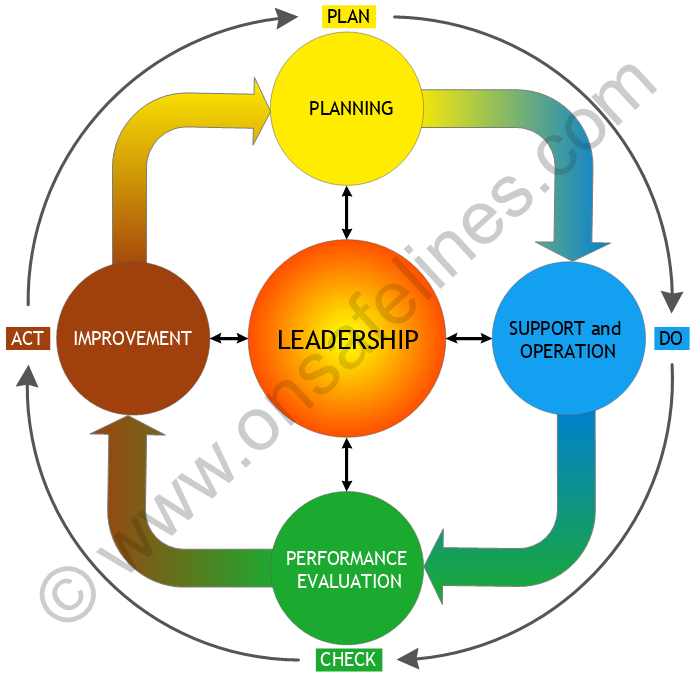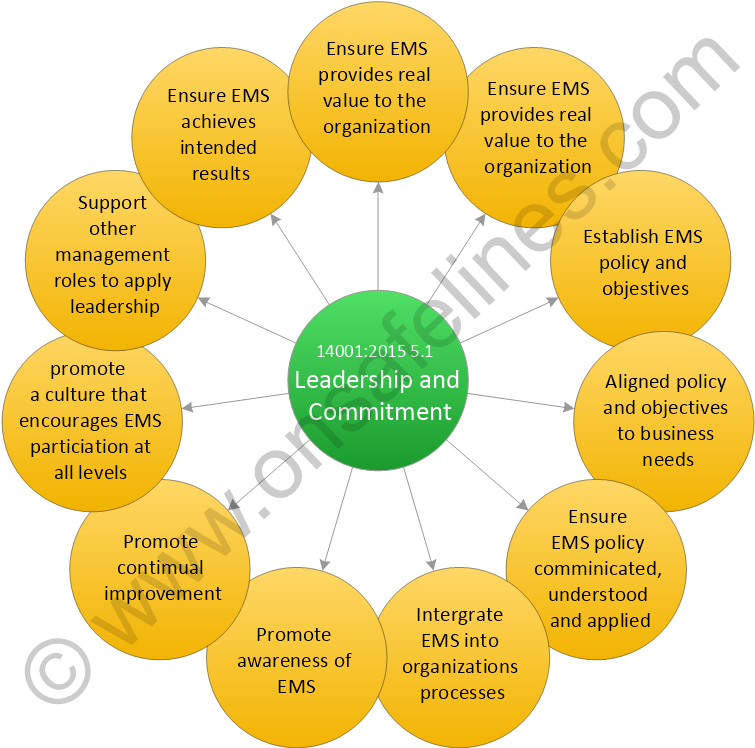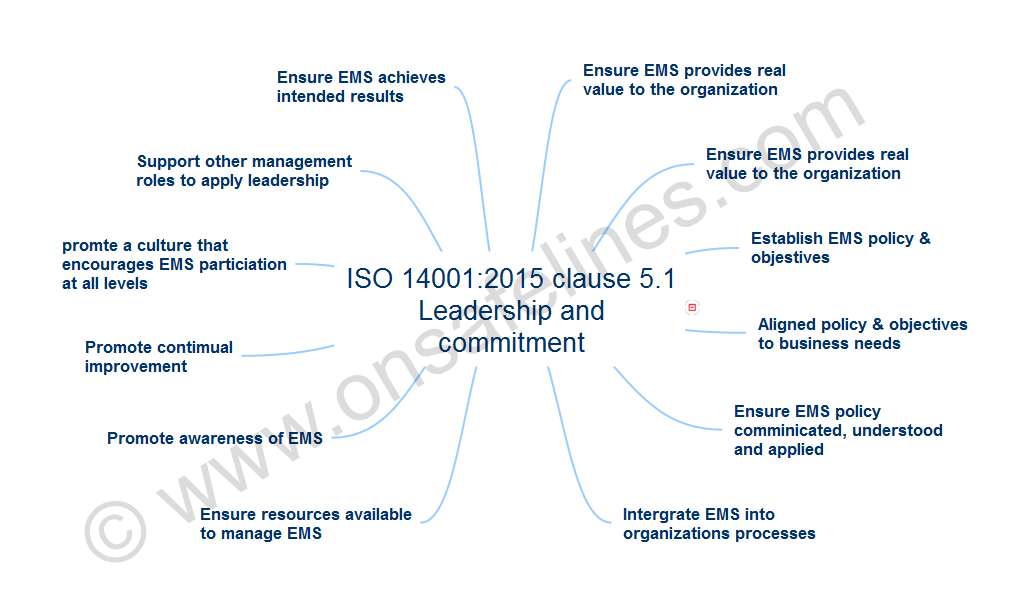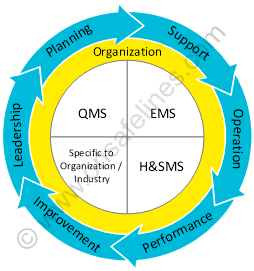|
|
ISO 14001-2015 5.1 Leadership and commitmentSend comments on this topic |
FREE QHSE Software Click <HERE> to Learn More |
||
QHSE Support >(Site Map) Environmental Guidance > ISO 14001-2015 Clauses > ISO 14001-2015 Clause 5 >
ISO 14001:2015 Clause 5.1 Leadership and commitment
|
PLAN |
DO |
CHECK |
ACT |
Clause 5.1 Breakdown
|
5.1 Leadership and commitment |
...demonstrate leadership, commitment and accountability... (engagement to the EMS system)
Leadership is at the heart of the ISO 14001:2105 standard, which can be clearly seen in PDCA model where it sits centre to all processes.
ISO 14001:2015 Clause 5.1 Leadership and Commitment - cycle spoke diagram
ISO 14001:2015 Clause 5.1 Leadership and Commitment - concept mind-map diagram
There needs to be and understanding of the EMS system by top management.
All managers need to comprehend the environmental policy and the aspects of the EMS system that they are influenced by, or they have influence over... not forgetting opportunities...
Performance needs to be relative to the EMS aspects. Department managers can be very good at monitoring and identifying trends, often able to produce performance targets for production, attendance, failure rates, complaints, non conformances, accident rates, staff turn-over and many other KPI's that top management may require. However, when asked by an auditor about their EMS performance, many are unable to make tangible links between their KPI's and the EMS aspects within their control.
One of the key leadership values is support for other management roles. Middle to lower management in many organizations can be emancipated and not be intrinsic to the overall objectives of the EMS or other management systems. Often this will lead to a workforce which is disengaged from all but their own interests...
Top management need to ensure resources for the EMS are available, this can include materials, staff, budgets, tools, technologies, etc.
The requirement for EMS communications is looking for a more pro-active approach and not one that kicks into place when things go wrong, The organization should plan environmental communications and topics, much the way quality management systems are used to promote more business. The reason for poor EMS communication is often because management don't know what environment topics to communicate.
The EMS system will require that the intended outcomes are achieved. As a minimum top management would need to demonstrate the EMS system;
•meets legislation and compliance obligations
•achieves EMS objectives
•improved environmental performance
All managers need to be able to communicate where they influence these three key areas. Other EMS objectives such as energy reduction targets, reduce waste material to landfill, reduce water usage would be in addition to the three listed above.
The EMS system should not be a stand-alone component and their needs to be some level of integration with other organizational management systems, which is at least observable. Many management system requirements will lead themselves to relatively simple amalgamation, examples being, documented information, corrective actions, continual improvement, auditing, management review, competence, communication, etc.
Leadership and commitment should be clearly evident through the management review process.
Example of a combined approach (some would refer to this as a TQM management system)
Useful integrated management system cross references
ISO 9001
•ISO 9001:2015 5.1 Leadership and commitment
ISO 45001
•ISO 45001-2018 5.1 Leadership and commitment
Help file v2.276.407 : QHSE Support - Website On Safe Lines
onsafelines.com QHSE Software 2025 : Webmaster: Brian G. Welch MSc(QHSE), NVQ4(OH&S), CMIOSH



